Top 10 Weird Motorcycle Front Suspension Systems
These are the strangest motorcycle front ends – from Springer to hub-centre – to have ever been put into production

With last year's arrival of an all-new BMW R1300GS and more recently the R1300 GSA complete – still – with Telelever front suspension, not to mention the star of the Milan show – the radical, hub-centre Bimota Tesi – it’s clear that ‘weird front ends’ aren’t going away anytime soon.
Conventional telescopic front forks, whether inverted or otherwise, may remain far and away the most common type of motorcycle front suspension, but this is not the only type – and nor was it the first. While the first production motorcycles with hydraulically damped telescopic forks were the BMW R12 and R17 in 1935 (a Scott was arguably the very first in 1908 but had no damping, while, for comparison’s sake, Harley’s first bike so equipped was the 1949 Hydra Glide), plenty of bikes had front suspension before that, most commonly ‘girder’ forks.
So, what, exactly, are these other forms of motorcycle front suspension, or ‘funny front ends’ as we sometimes call them? What bikes can you find them on and do any still exist? Here’s a brief overview of the story, in (roughly) chronological order.
Girder forks
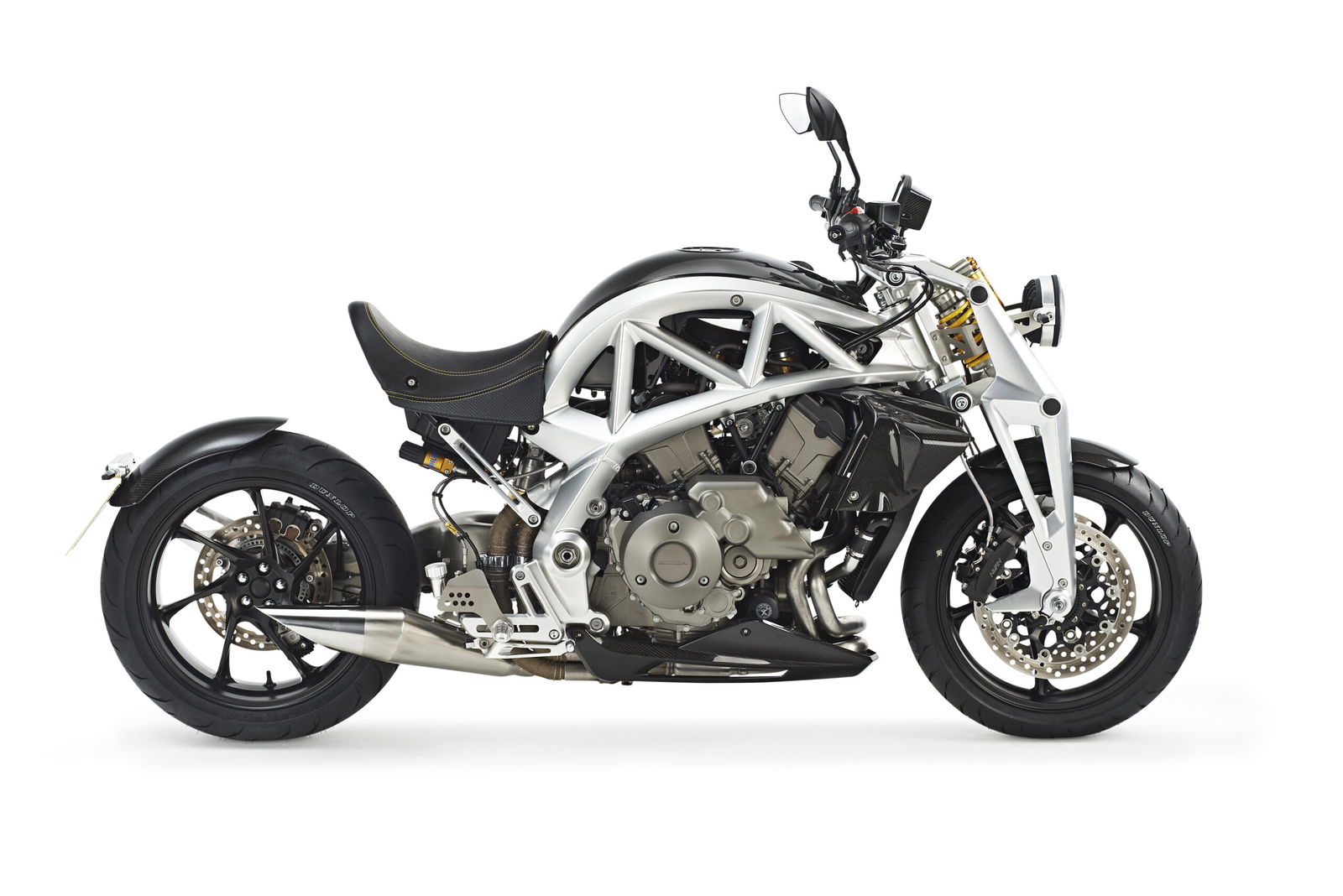
The front suspension that first caught on in Europe was the Druid type, also known as a ‘girder’ fork. This sports a pair of solid ‘forks’ just like a bicycle but attached to the triple clamp by linkages with a spring usually between the top and bottom triple clamps.
The most popular front suspension system up to WW2, it had the benefit of being easy to manufacture and could be engineered to provide reasonable performance. One of the last machines using it was the 1950s Vincent Black Shadow which used its own refinement called Girdraulic suspension, which also featured a hydraulic damper. On the downside, girders are vulnerable to flex so must be made strong and thus, usually, heavy.
Although mostly associated with early motorcycles, the Ariel Ace is available with modern, CNC machine aluminium girder forks, while they are also still used by Combat Motors (previously Confederate) in the US, this time in carbon fibre as a means of getting around the weight problem.
Springer forks
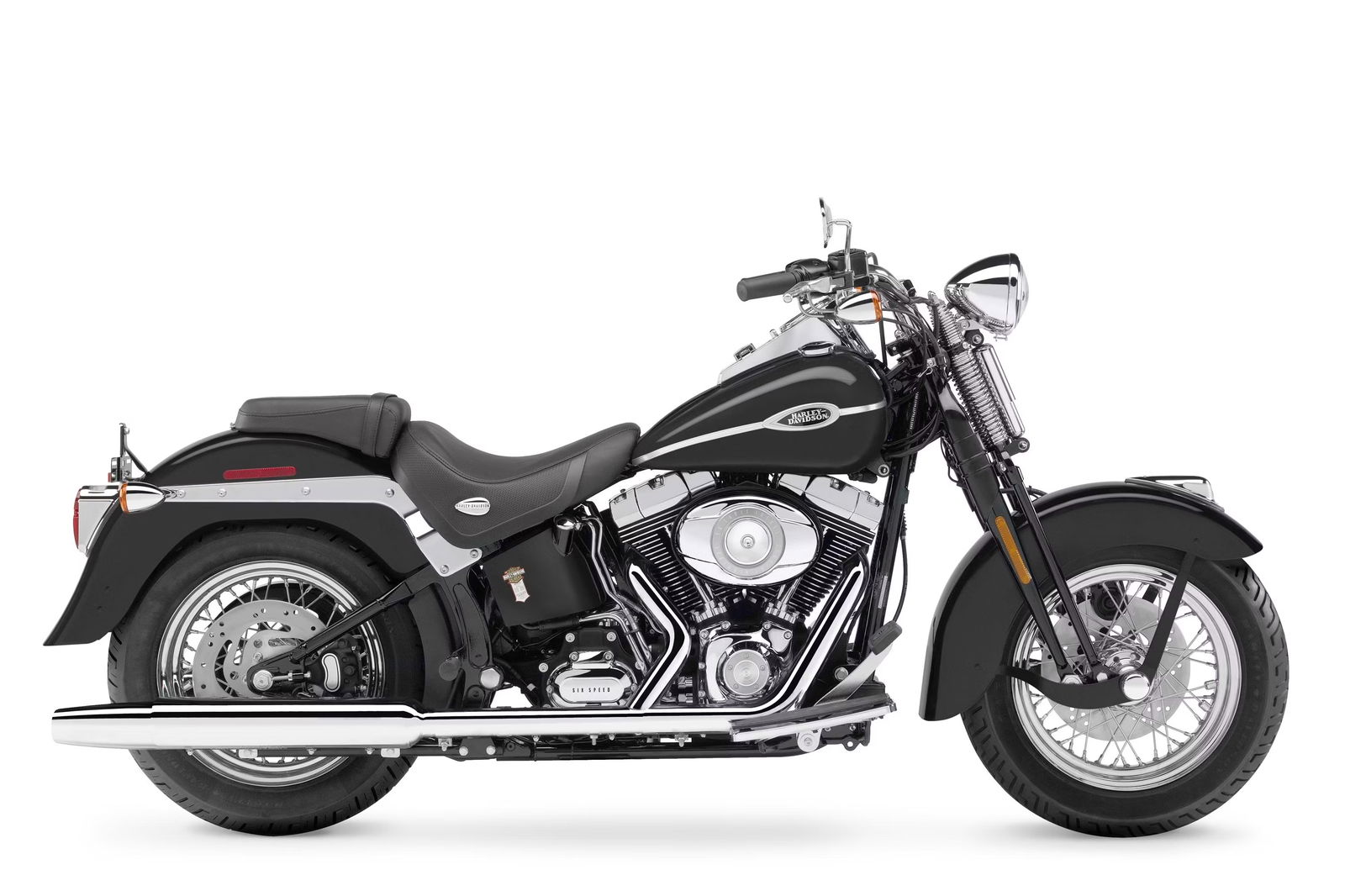
A close relative of the girder fork is the springer fork, as first introduced by Harley-Davidson in 1907. It differs from the girder in that the suspension links are at the bottom of the fork, not at the top. Long arms then transfer suspension movement to the spring/damper units, which are mounted up in the triple tree like those in the girder front end.
Harley’s first design used the patented Sager Cushion fork with concealed springs and then repeatedly updated the design until telescopics started taking over with the 1949 Hydra Glide. The design suffers the same drawbacks as the girder fork in having a high unsprung weight and long, flex-prone fork, although they became popular once again in the 1960s US chopper scene due to their visual appeal and aptitude for long length and in 1988 Harley re-introduced a factory version, the FXSTS Springer Softail which lived on up to 2009.
Trailing link forks

A trailing link fork suspends the wheel on a link (or links) with a pivot point forward of the wheel axle. Most famously used by Indian motorcycles since 1910, it was also used by BMW for its early bikes including its first 1923 R32. BMW switched to telescopics after 1935.
The biggest problem with this kind of system is very limited suspension travel and the most recent production bike to use it is Honda’s US-only, Gold Wing-based custom cruiser, the Rune.
Leading link forks
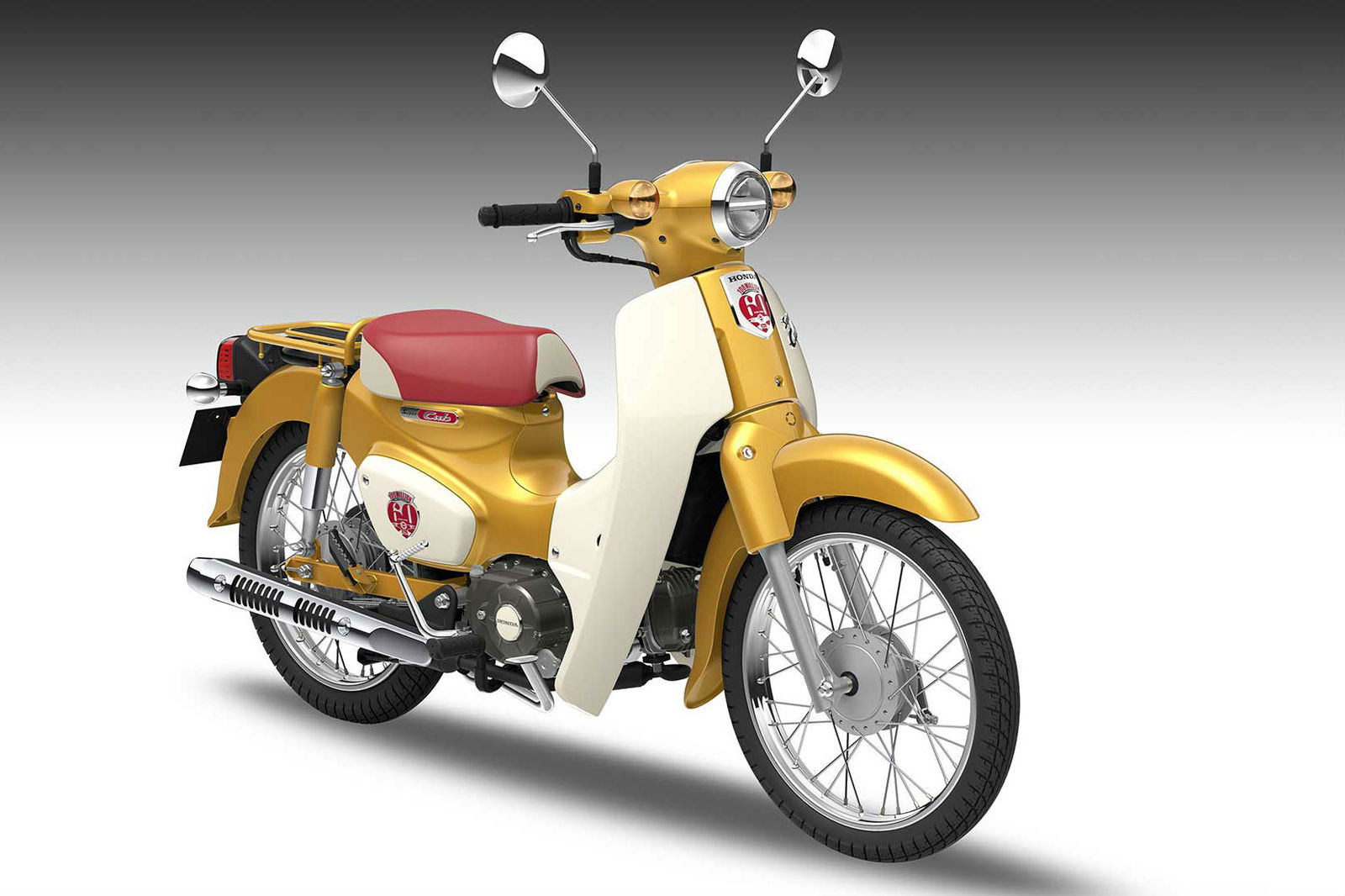
A close relation to the trailing link fork is its successor, the leading link fork which suspends the wheel on a link (or links) with a pivot point behind rather than in front of the wheel axle with the advantage being reduced castor effect and added stability.
With the advent of one-piece spring/damper units, the leading link fork became a reasonable alternative to telescopics with one of the most famous racing motorcycles of all time, the Moto Guzzi V8, had leading link forks. Their strength and stability also made them suited to sidecar use, particularly off-road as in sidecarcross while, at the other extreme, the most common example of a leading link fork is probably that on the Honda Super Cub.
‘Earles type’ forks
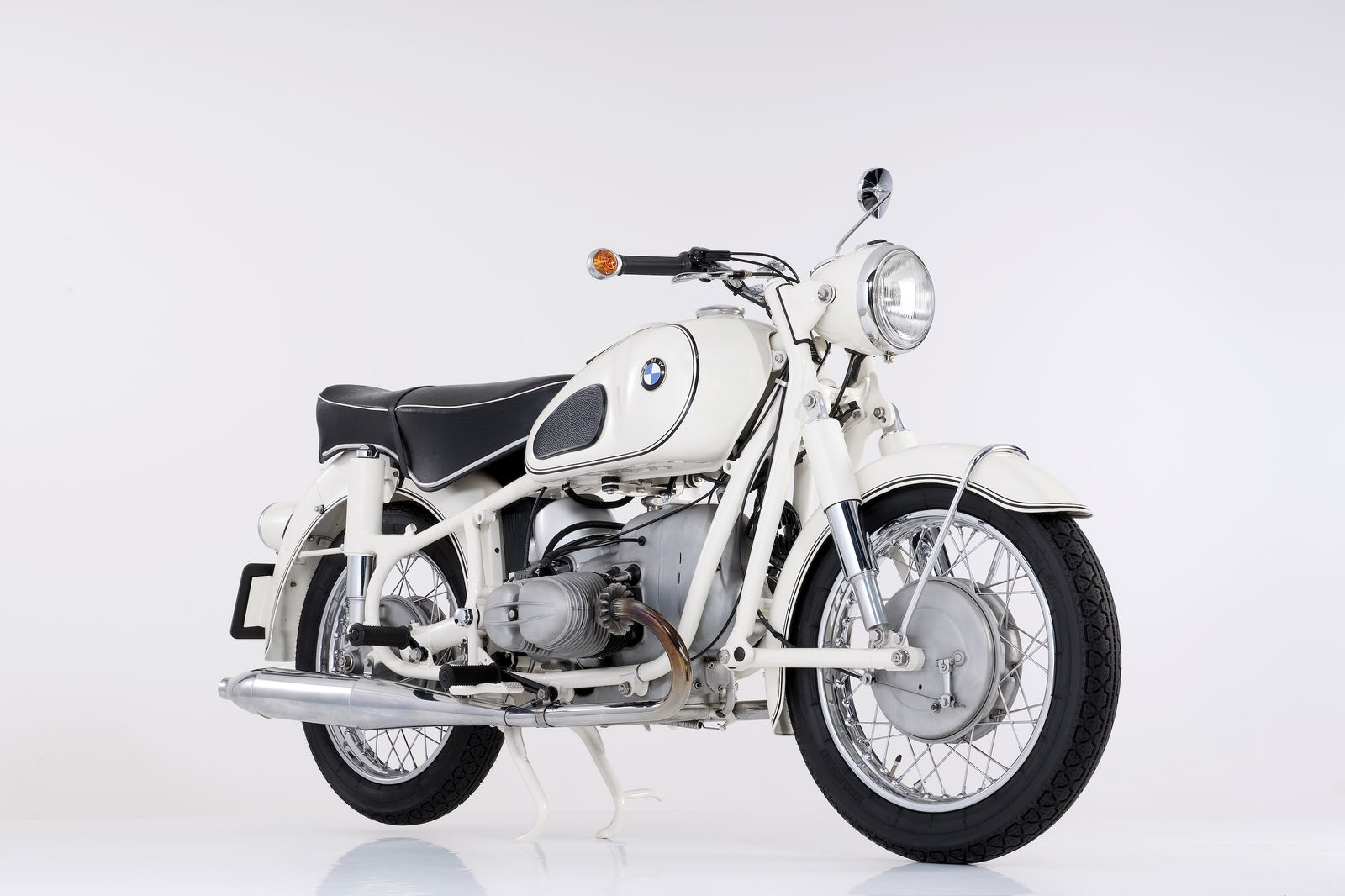
The Earles fork is a variation of the leading link fork patented by Brit Ernest Earles in 1953. He recognized that the main problem trouble with the leading link design is that, as the links are independent, if the springs are slightly mismatched, the front wheel will twist during suspension travel. Earles’ solution was to make a rigid swingarm to hold the front wheel. In order to make it rigid, it had to be pivoted behind the wheel. The design is constructed of light tubing, with conventional 'shock absorbers' mounted near the front axle.
Several manufacturers licensed the Earles forks for racing, such as MV Agusta, while BMW used Earles forks on all of its motorcycles from 1955 to 1968, such as the R69 S. BMW discontinued Earles forks after 1970, as fashion dictated the return of the telescopic fork.
Single-sided Telelever
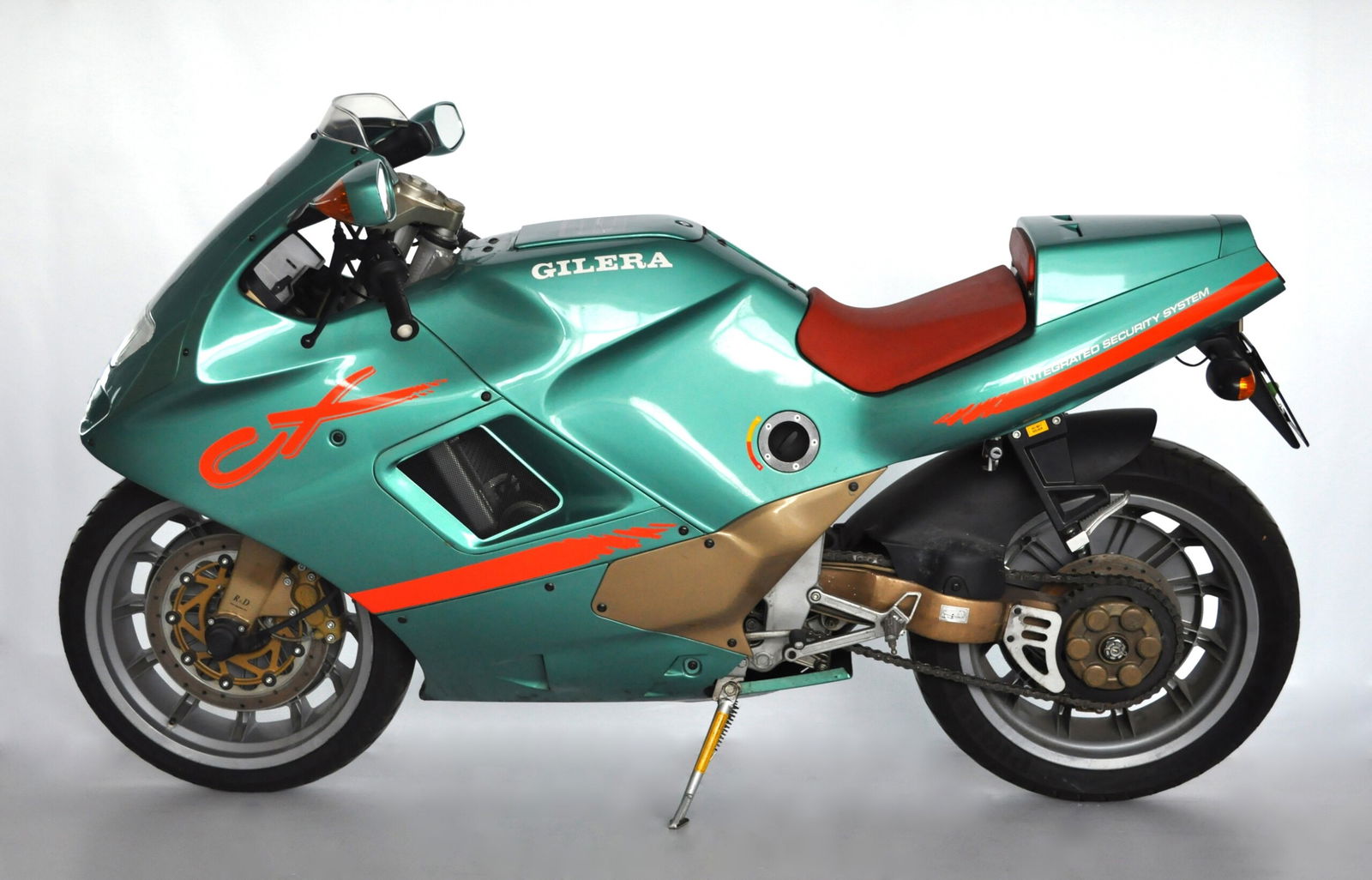
A one-off that deserved far greater success, this radical front-end system was one of the standout features of Gilera’s 1991 CX125. A radical-looking, space-age 125 stroker, it was designed by Federico Martini, who had previously been responsible for Bimota DB1 and featured not just a single-side front suspension set-up, but a single-side rear one, too, with the end result looking like its wheels (from the right of course) weren’t connected to the bike...
In reality, the front set-up was effectively a Hossack design but with a single-sided fork, steering via a series of connecting rods and a dished 17-inch wheel so the single brake caliper can sit on the bike's centre line. In reality, the ride was described as ‘stiff’, it had reduced suspension travel than conventional systems and was expensive, so much so that it was a sales failure and not continued with. But it looked great while it was around!
Telelever/Saxon-Motodd
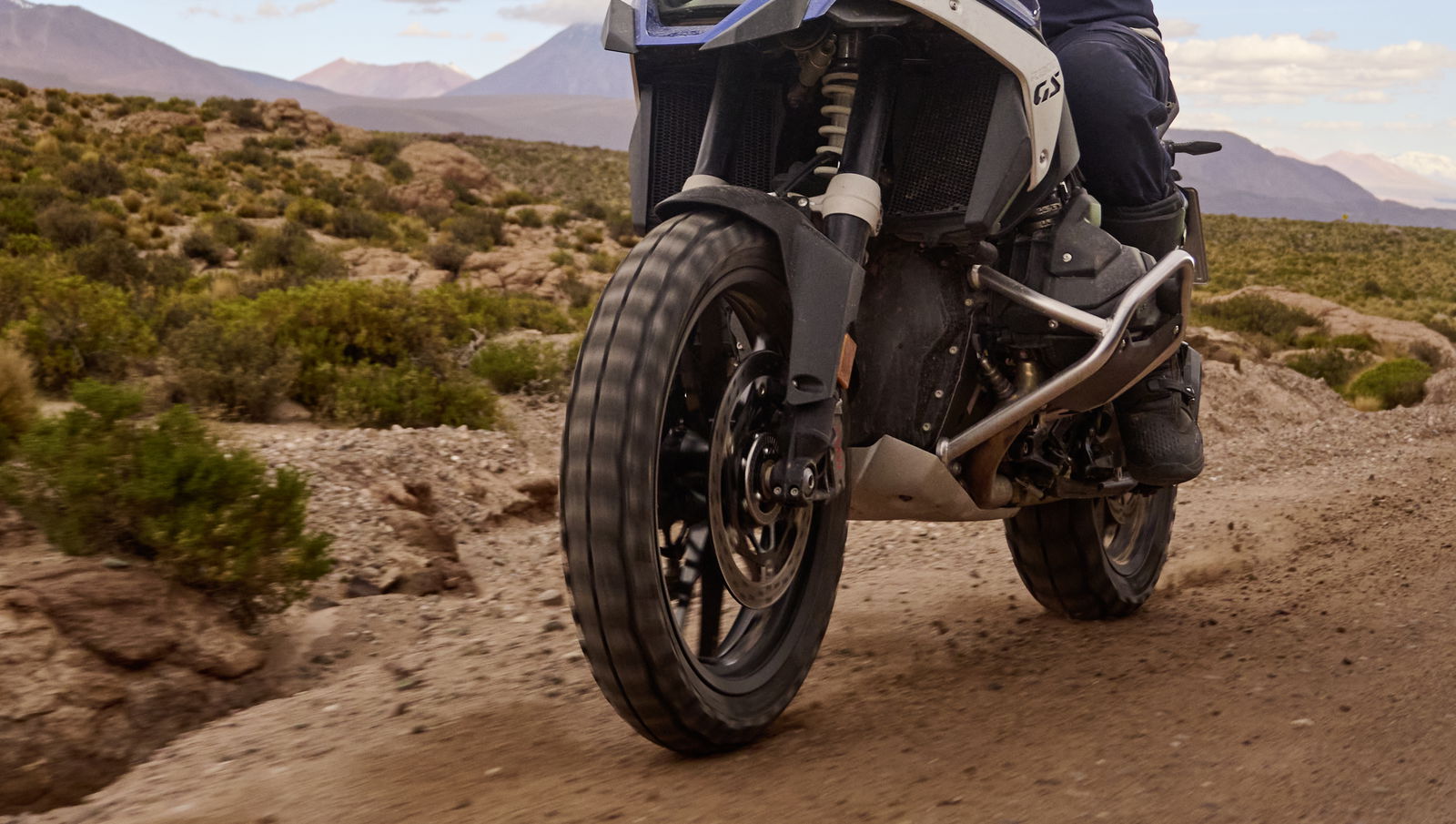
The next big advance in telescopic forks came in the Eighties. British company Saxon-Motodd connected the above-wheel fork brace to the front of a pivoted wishbone via a ball joint, then connected a spring-damper unit to the wishbone. This solved several of the shortcomings of the conventional telescopic fork, namely reducing unsprung weight, and delivering natural anti-dive. It also looked relatively conventional. BMW adopted a version of the system into its 1994 range under the name ‘Telelever’ and on the whole has been received well, without actually replacing telescopics. The new R1300GS and R1300 GSA use the latest ‘Telelever Evo’.
Hossack/Fior/Duolever
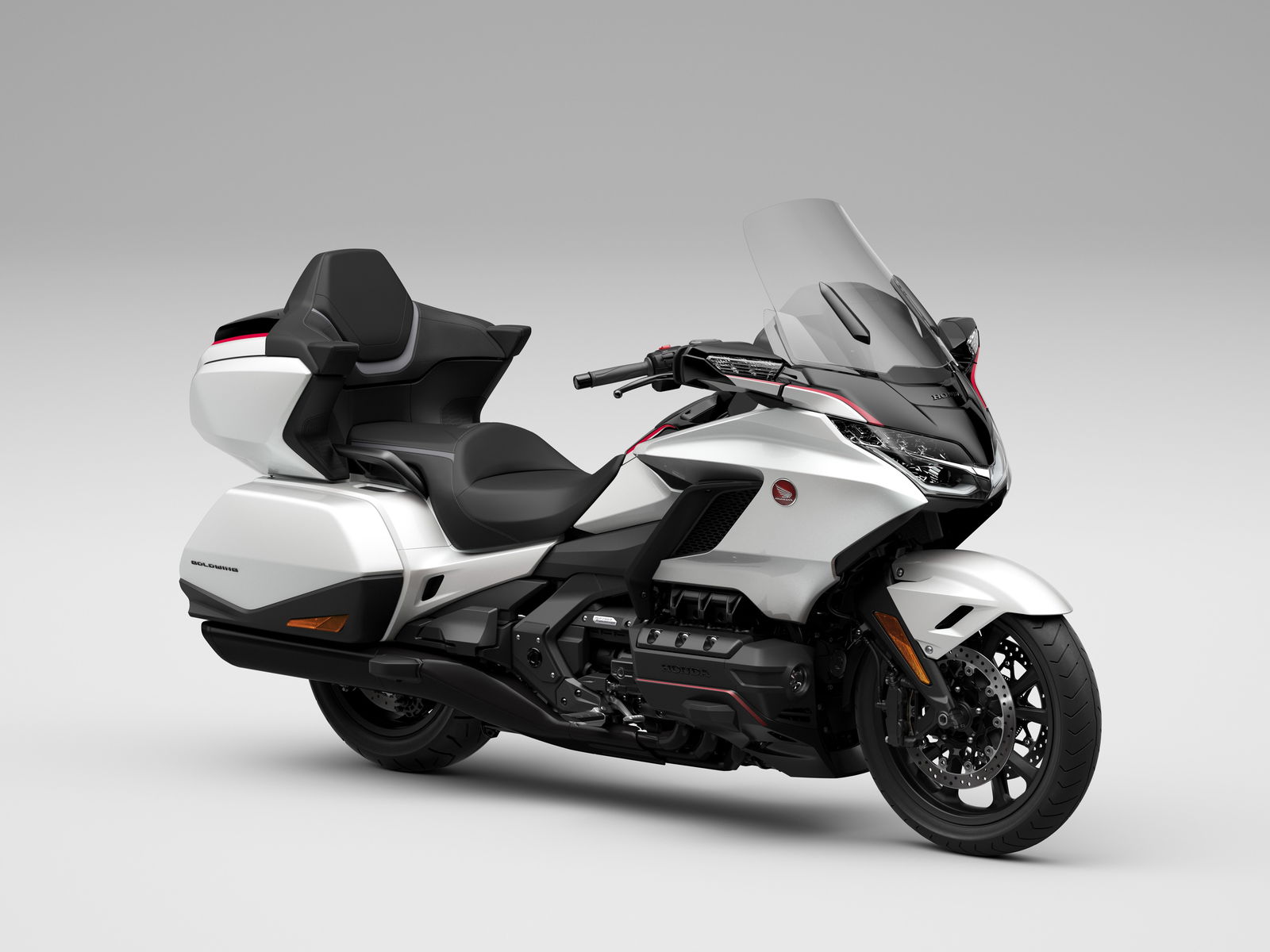
Another ‘funny front end’ system adopted by BMW was its Duolever system, as introduced on the 2004 K1200S. This was based on a patented design by Scottish inventor Norman Hossack in the 1980s which was also used in racing by Fior. Influenced by car suspension, the system consists of two wishbones, an upright and a steering linkage. The wishbones look and work exactly like their car equivalents and work through a single, adjustable spring/damper unit with the effect that it completely separates suspension from steering forces. Although effective, used also on the K1200R, 1300R, 1300S, and 12 and 1300 GT, it has since been dropped, although lives on in Honda’s latest GL1800 Gold Wing. It was also used on the Britten V1000.
Hub-centre steering
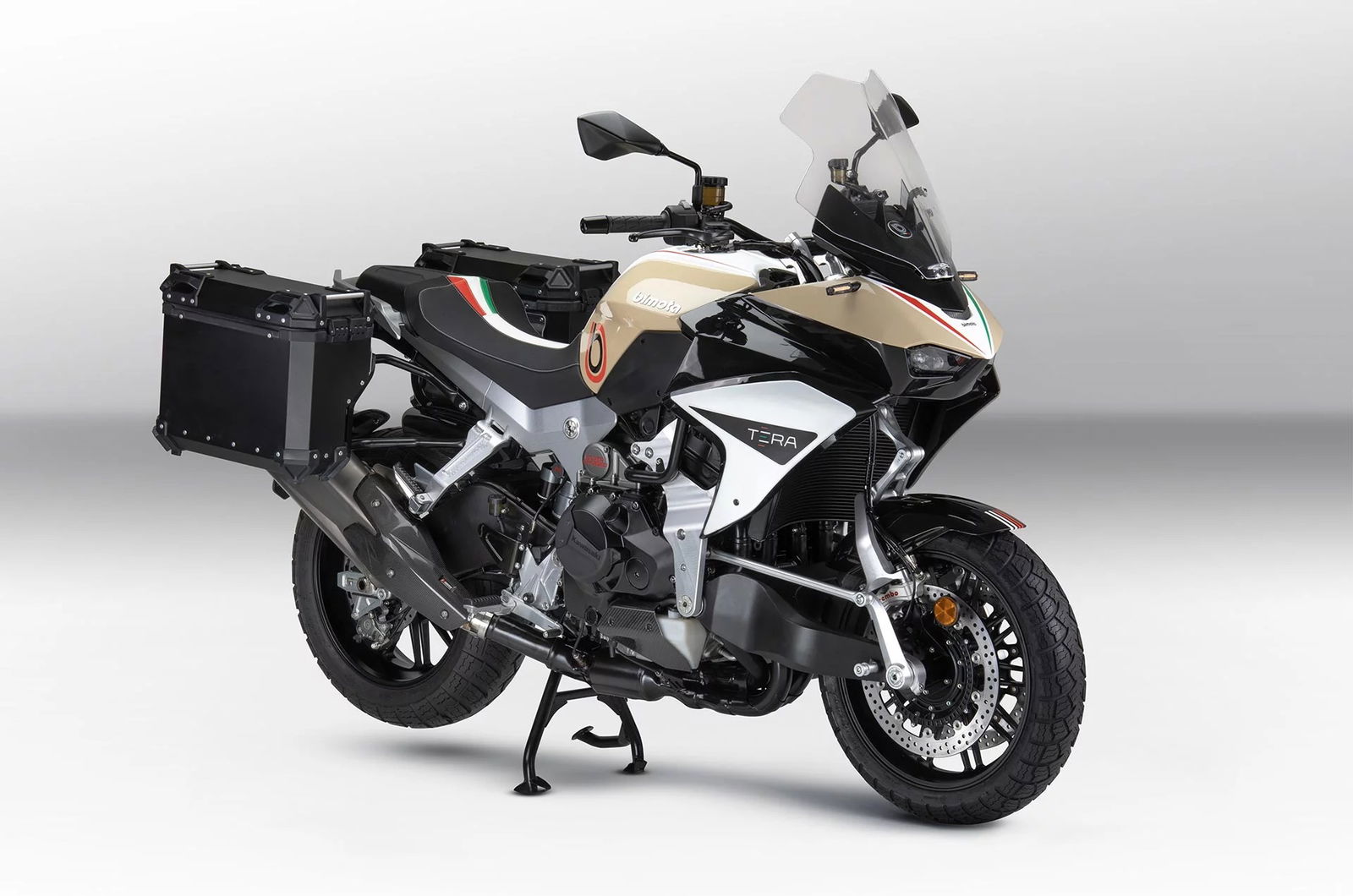
You might assume, with the Bimota Tera and more, hub-centre steering is a modern phenomenon. In reality, it dates back to 1918 when Carl Neracher designed a revolutionary motorcycle called the Ner-a-Car. Later, in the 1960s, British engineer Jack diFazio began experimenting with hub-centre designs while in the 1980s Elf created a succession of Honda-engined GP bikes with centre-hub steering.
There have been a number of production bikes since. First, Bimota’s Tesi in 1991, then Yamaha’s 1993 GTS1000 and more. In truth, although interesting and impressive, all have been expensive and largely unsuccessful – but it doesn’t seem to stop them trying.
‘Coaxial 2D’
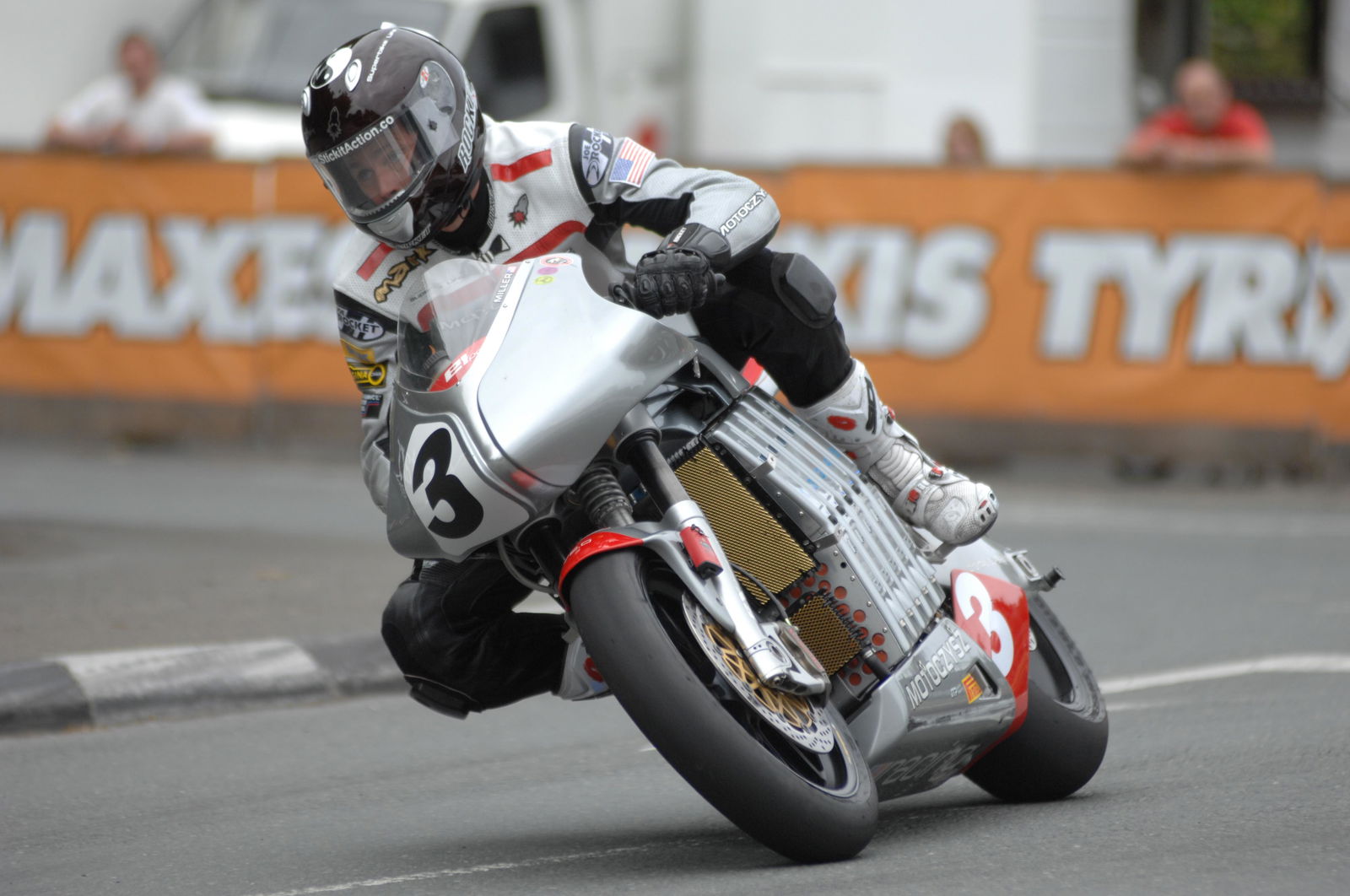
Founded by late American engineer and professional motorcycle racer Michael Czysz, who tragically died from a rare form of cancer in 2016, MotoCzysz was set up to create and race a pioneering, all-new machine in MotoGP. When the rules changed to the 800cc formula in 2008, this plan switched to a pioneering electric racer, which went on to great success, winning the TT Zero events in 2011, 2012 and 2013.
Among its novel features was a patented front suspension system described as ‘a motorcycle or bicycle front end having coaxial steering and suspension components and having telescopic forks’. Unsprung weight was dramatically reduced by removing their suspension components to a central location, coaxially within the steering tube, ride height could be adjusted without loosening the forks in the yokes and some designs also had adjustable trail.

